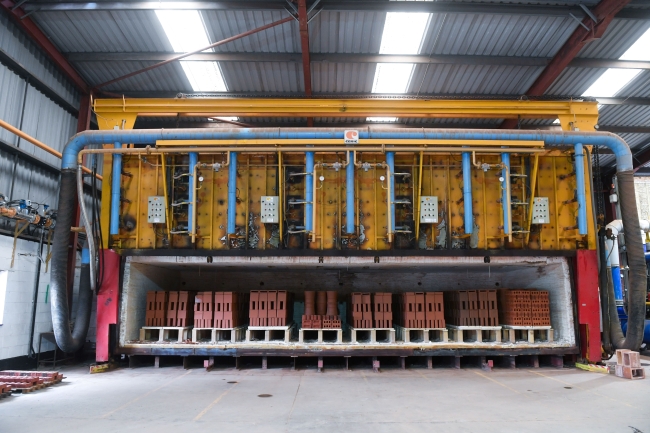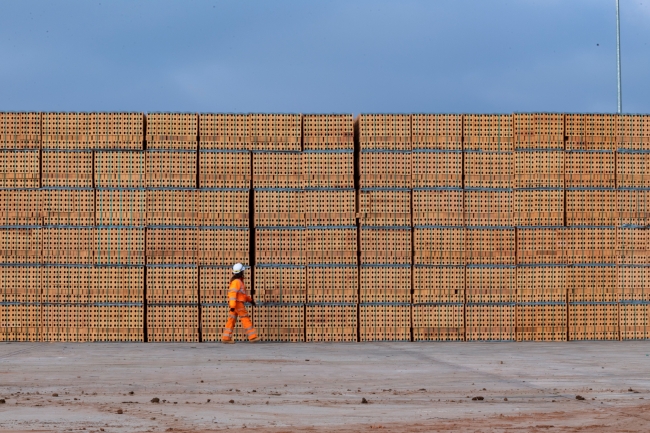3 minute read - 13th September 2023
Building products manufacturer Forterra paves the way to hydrogen future
As part of its future-proofing strategy, building products manufacturer Forterra has completed the first phase of hydrogen trials at its Measham brickworks factory in North West Leicestershire.
Whilst UK proposals for inclusion of hydrogen into the national grid are still in their infancy, Forterra says it has adopted a proactive approach, extensively trialling 20% hydrogen blends across its brick ranges. This strategy will allow Forterra to assess the possible effects of hydrogen on its products, processes and equipment, well in advance of any changes to government policy.
Instead of constructing trial-specific kilns, Forterra used existing machinery to see if its current legacy kiln equipment could adapt to the new hydrogen blend. In addition, Forterra partnered with Air Products, which provided a hydrogen storage facility and a pressure and flow regulation system. This collaboration allowed Forterra to blend different percentages of hydrogen with natural gas for the purposes of the trial.

Building products manufacturer Forterra has completed the first phase of hydrogen trials at its Measham brickworks factory in Leicestershire / Picture: Forterra
David Fox, capital engineering manager at Forterra, said: “Our main priority is to determine whether the use of hydrogen blends would have any aesthetic or performance-related impact on the finished product, and whether the blend can be used with existing kiln equipment.
“Our bricks are renowned for their unique range of textures and colours and for their high performance and durability. We’re therefore glad to have had our predictions confirmed: the 20% hydrogen blend shows no impact on these criteria. Moreover, it is fully compatible with existing kiln equipment. The latter is especially encouraging. Our kiln equipment tends to have a lifespan between 25 and 40 years: replacing it would incur significant carbon costs.”
To ensure consistency in the testing process, Forterra tested its Measham buff bricks and Desford red bricks, with special attention given to maintaining the distinctive red hue of the bricks. As a reducing agent, hydrogen can reduce the amount of oxidation that takes place within the kiln, and therefore potentially affect the final colouration of the brick product. To offset this, oxygen levels had to be carefully monitored and adapted during the trials, to ensure the renowned rich red hue of the final brick was maintained.

Initial results from these trials have suggested that there are no major impacts to brick quality, aesthetic appeal, or to the kiln when using the 20% hydrogen blend / Picture: Forterra
Forterra’s hydrogen trials align with the company’s broader commitment to achieving ambitious environmental, social, and governance (ESG) targets. This commitment is reflected in the manufacturer’s other developments and investments made over the past year, including a solar farm, a new fuel efficient fleet of trucks, and new reduced plastic packaging solutions, as well as its brand new Desford factory, the largest and most efficient brick factory in Europe, which opened in May 2023.
Initial results from these trials have suggested that there are no major impacts to brick quality, aesthetic appeal, or to the kiln when using the 20% hydrogen blend. The next step for Forterra is to observe the effects of this blend of hydrogen on different types of clay, thereby determining whether the blend could be implemented with equal capacity across Forterra’s range of brickworks.
David Manley, head of sustainability at Forterra, added: “The initial results show that our current production facilities are more than capable of maintaining our renowned brick quality with this new hydrogen blend, which is exactly as we’d predicted. As decarbonisation becomes a critical objective for industries worldwide, the 7% reduction in carbon output achieved through the use of hydrogen fuel in these trials is also a welcome bonus.”